Budgerigars (Melopsittacus undulatus), commonly known as budgies, can make wonderful pets. They are generally inquisitive, social birds that are relatively easy to keep.
There are many colour varieties available, with the green colouration being the most common in wild birds. Mature males generally have a blue cere (the cere is the skin structure around the nose and above the upper beak), and females usually have a brown cere.
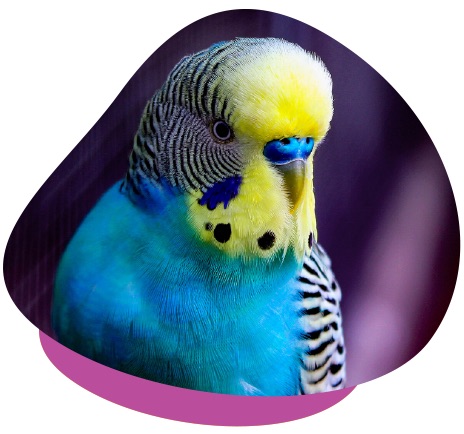
Most budgies are quite vocal, however, only a few will develop the ability to talk in words we can understand. Budgies only grow to a small size, with an adult generally weighing between 30-60 grams.
They can be housed individually or in groups. If introducing a new budgie to the group, it is important to introduce them slowly to avoid fighting and dominance issues. Even with a very slow introduction it is important to remember that some budgies simply won’t get along and may need to be kept separately.
Diet
It is advised to provide a diet not too high in protein, as this can lead to kidney disease. It is also best to avoid diets high in commercially produced bird seed, as they are often high in fat and low in many of the major vitamins that budgies require.
Feeding a high seed diet can increase the risk of obesity and other more serious problems such as lipoma (lump) formation and cardiovascular disease.
Every budgie is different so for a tailored diet plan, please get in contact with us. Our general recommendations for your budgie’s diet are as follows:
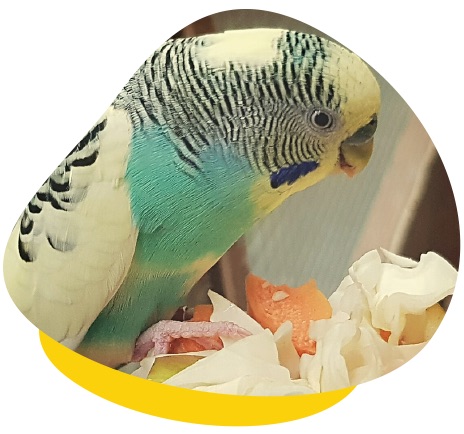
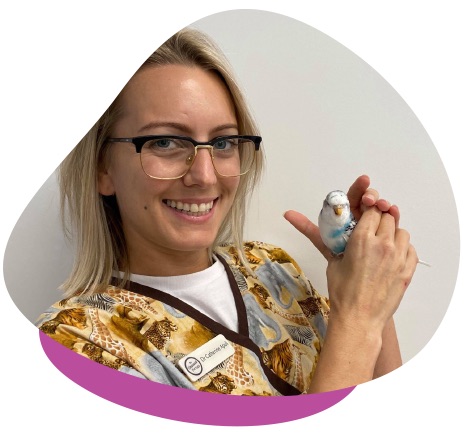
- 30-50% premium commercial pelleted diet suitable for budgies. Feeding more than 50% pellets can lead to disease issues and is not recommended for budgies.
- 20-35% vegetables (recommended vegetables include: capsicum, broccoli, chili, corn, carrot, zucchini, squash, spinach, pumpkin, sweet potato, beans and peas), sprouted seed and native vegetation. Most Australian blossoms and plants are okay to feed, but ensure these are free of wild bird droppings contact. Fresh native grass varieties that produce small seeds on their stems are great for foraging and are highly encouraged.
- 5-10% fruits (i.e. melons, strawberries, banana, blueberries, grapes, peaches, pear, apple)
- 10-35% quality commercial seed mix.
- 1-5% snacks for training and as treats including unsalted nuts (i.e. macadamia, cashew and walnut), pasta, eggs and brown rice.
Housing and Enrichment
We advise a good quality powder coated or stainless steel cage of an appropriate size. Some painted cages can contain lead elements that can be toxic to your bird, so please take care when selecting your cage. Cages that have been galvanised with a zinc coating can also cause problems so please select carefully.
Stainless steel or ceramic bowls are recommended, as these materials are not porous, making cleaning easier and more effective. Plastic bowls can become porous after a while and can cause problems if bacteria build up in these areas.
Perches of various sizes are important for exercise of the toes and feet health. They also help to promote the natural wear of their toenails. Natural perches from native trees are ideal as they generally vary in size anyway.
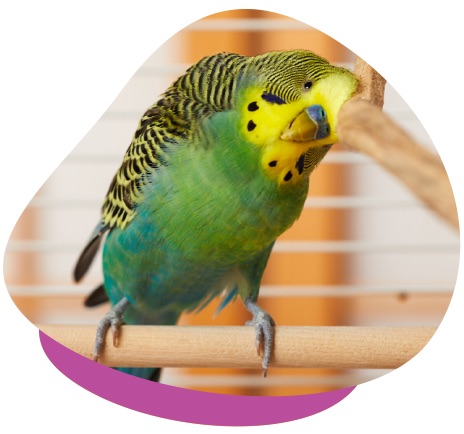
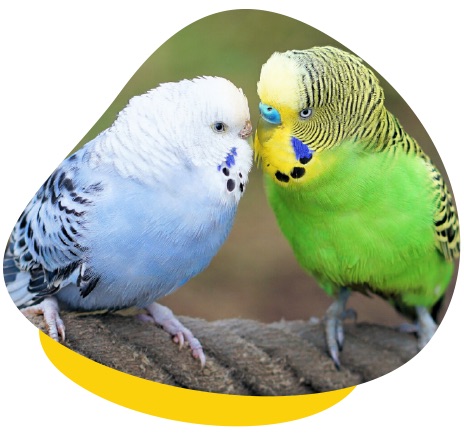
Please do not provide string or rope toys as they often will fray over time and can cause gastrointestinal obstruction if swallowed. If you are feeding a balanced diet, then cuttlefish and other supplements are not needed.
Environmental enrichment is highly recommended and encouraged. Simple things like utilising cardboard toilet rolls to hide food can provide hours of entertainment for many birds.
It is important that your bird gets enough sleep; long-day light exposure can stimulate excessive moulting and increased reproductive activity. We recommend you keep to the natural day length. If your bird is kept inside in a well-lit area, then you can cover the cage when the sun goes down and place them in a dark room to ensure that their day length is not too long.
Common diseases
Gastrointestinal Problems
One of the most common diseases that we see in budgies is an upset gastrointestinal tract. Budgies will often present for regurgitation, vomiting or diarrhoea. If you see any of these signs, we recommend a consultation as there are many different causes, and if left untreated you may be putting your budgies life at risk.
Obesity
Obesity is a common problem in budgies. In many cases, this is related to diets high in seed. Fatty lumps can develop and interfere with your bird’s movement. In many cases the size of the lump can be reduced by placing them on an appropriate diet.
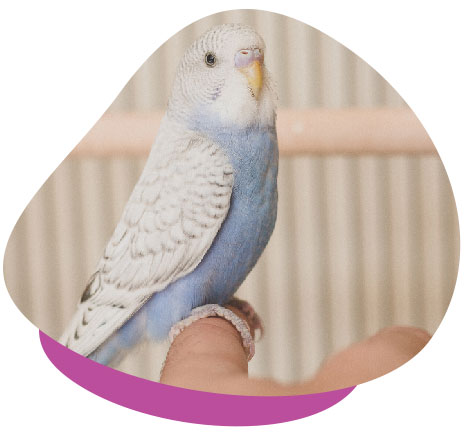
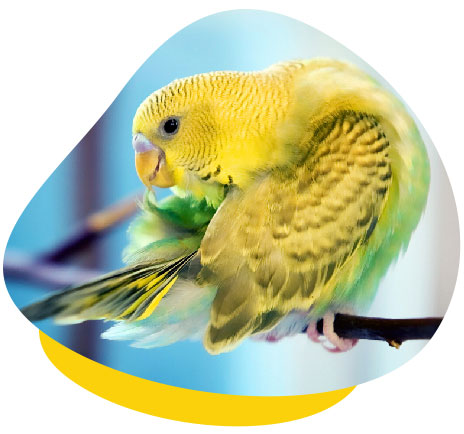
Lumps
Sometimes these lumps can be more sinister, and it is best to bring your budgie in if you notice any lumps or swellings present.
Scaly Face Mites
Another common disease is scaly face mite. This ectoparasite causes lesions on the feet and the beak. We advise to book an appointment if you notice this problem occurring. There are a few different treatment options.
Respiratory Infection
Upper respiratory tract infection is characterised by sneezing or ocular discharge and is common in young birds. Once again, it is best to bring them in for an appointment with one of our bird vets as there is a range of different causes of upper respiratory tract disease.
Chlamydia Pscittaci
Budgies infected with Chlamydia psittaci generally demonstrate respiratory and gastrointestinal symptoms such as difficulty breathing, sneezing, sinusitis, diarrhoea, discharge from the nose and eyes. The colour of your birds’ urates (the white part of the droppings) may also change to a green colour if your bird’s liver is affected.
Chlamydia infection is common in young birds, and this is a serious disease that can be transferred to other birds AND humans.
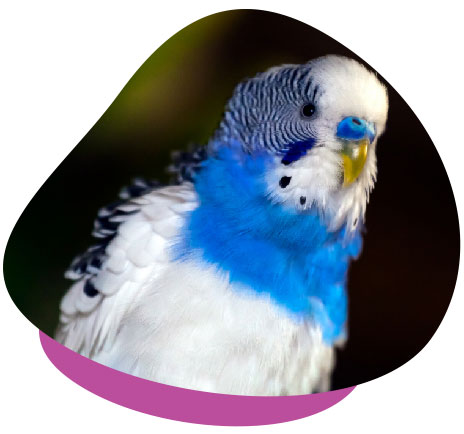
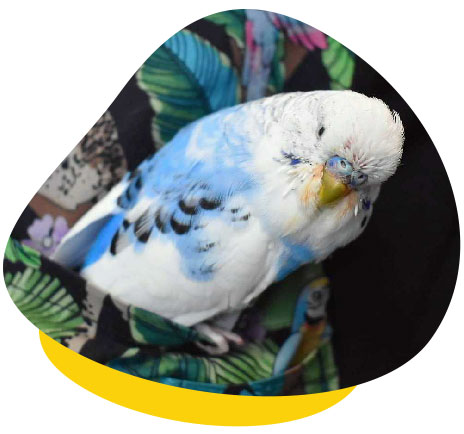
Kidney Disease
Kidney disease can occur due to high protein diets. The condition requires medical attention and can be quite serious. Clinical signs associated with this disease involve vomiting, lethargy and watery droppings.
Prevention is the best medicine!
Regular check-ups every 6-12 months are important, as birds are very good at hiding any illnesses that they have. These check-ups allow for the early detection and treatment of disease and illness before they worsen.

